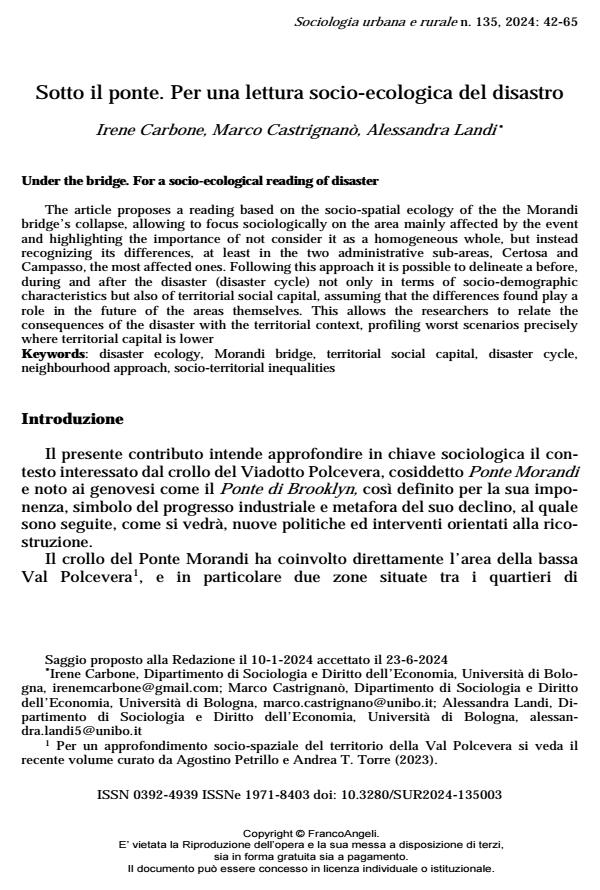Sotto il ponte. Per una lettura socio-ecologica del disastro
Titolo Rivista SOCIOLOGIA URBANA E RURALE
Autori/Curatori Irene Carbone, Marco Castrignanò, Alessandra Landi
Anno di pubblicazione 2024 Fascicolo 2024/135
Lingua Inglese Numero pagine 24 P. 42-65 Dimensione file 216 KB
DOI 10.3280/SUR2024-135003
Il DOI è il codice a barre della proprietà intellettuale: per saperne di più
clicca qui
Qui sotto puoi vedere in anteprima la prima pagina di questo articolo.
Se questo articolo ti interessa, lo puoi acquistare (e scaricare in formato pdf) seguendo le facili indicazioni per acquistare il download credit. Acquista Download Credits per scaricare questo Articolo in formato PDF

FrancoAngeli è membro della Publishers International Linking Association, Inc (PILA)associazione indipendente e non profit per facilitare (attraverso i servizi tecnologici implementati da CrossRef.org) l’accesso degli studiosi ai contenuti digitali nelle pubblicazioni professionali e scientifiche
The article proposes a reading based on the socio-spatial ecology of the the Morandi bridge’s collapse, allowing to focus sociologically on the area mainly affected by the event and highlighting the importance of not consider it as a homogeneous whole, but instead recognizing its differences, at least in the two administrative sub-areas, Certosa and Campasso, the most affected ones. Following this approach it is possible to delineate a before, during and after the disaster (disaster cycle) not only in terms of socio-demographic characteristics but also of territorial social capital, assuming that the differences found play a role in the future of the areas themselves. This allows the researchers to relate the consequences of the disaster with the territorial context, profiling worst scenarios precisely where territorial capital is lower
Parole chiave:disaster ecology, Morandi bridge, territorial social capital, disaster cycle, neighbourhood approach, socio-territorial inequalities
Irene Carbone, Marco Castrignanò, Alessandra Landi, Sotto il ponte. Per una lettura socio-ecologica del disastro in "SOCIOLOGIA URBANA E RURALE" 135/2024, pp 42-65, DOI: 10.3280/SUR2024-135003